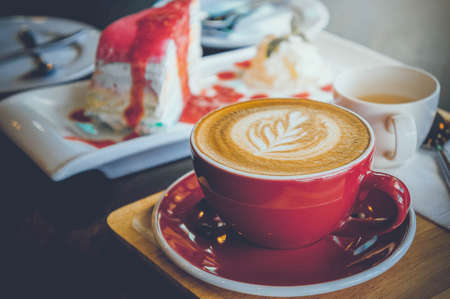Setting the Scene: Creating a Welcoming Atmosphere
Before even thinking about grinding beans or boiling water, the heart of British hospitality begins with setting the stage. A tidy living room or kitchen is your blank canvas—clutter discreetly tucked away, cushions plumped just so, and a vase of fresh blooms adding a splash of understated charm. It’s not about grandeur but rather those thoughtful touches that make guests feel instantly at ease. If you’ve got a well-loved teapot or some vintage crockery passed down through generations, now’s their time to shine—these pieces whisper stories of countless gatherings and lend an unmistakably British flavour to your table.
Ambience matters: cue up a playlist with mellow jazz, indie folk, or perhaps a sprinkle of Britpop for good measure. The right soundtrack turns background noise into gentle company, creating an easygoing vibe that encourages conversation. Don’t forget scent—light a softly fragranced candle (think Earl Grey, lavender, or sandalwood), or let the natural aroma of freshly brewed coffee do the talking. These subtle details transform your space from everyday to inviting, ensuring your guests are greeted not just by you, but by an atmosphere that says: you’re most welcome here.
Choosing the Right Coffee and Equipment
When it comes to serving coffee with a true British sensibility, the journey begins with selecting beans that suit the local palate. While the continentals may lean towards dark, intense roasts, British tastes often favour something lighter—think subtle notes and gentle blends that are as comforting as a drizzly afternoon in Manchester. Whether you’re shopping at your local artisan roastery or browsing supermarket shelves, look for beans described as “light roast” or “breakfast blend”; these tend to be brighter, with hints of citrus or floral undertones, perfect for a leisurely chat over biscuits.
But good beans deserve proper company. In UK homes, three types of coffee makers hold court on kitchen counters: the cafetière (French press), the stovetop moka pot, and the classic filter machine. Each has its own charm and works best with certain roasts and grinds. Here’s a quick guide to help you match your method to your mood:
| Coffee Maker | Best For | Grind Type | Why Brits Love It |
|---|---|---|---|
| Cafetière (French Press) | Lighter and medium blends | Coarse | Simple, sociable, and easy to share; brings out delicate flavours ideal for long conversations |
| Stovetop Moka Pot | Medium to darker blends | Fine (but not espresso-fine) | Strong, aromatic coffee reminiscent of café culture, yet perfectly at home on a rainy morning in Bristol |
| Filter Machine | Lighter roasts and breakfast blends | Medium-coarse | No-fuss brewing for multiple guests; keeps coffee warm for top-ups during catch-ups |
Don’t forget: freshly ground beans make all the difference. If you have a grinder at home, opt for whole beans and grind just before brewing. Otherwise, buy pre-ground coffee from a reputable local supplier—many will happily grind to suit your chosen method if you ask. By taking care with your selection and equipment, you’re already halfway to making your guests feel truly welcome, British-style.

3. The Art of Brewing: British Techniques and Rituals
If you’ve ever wondered how to bring a dash of British charm to your coffee ritual, it all begins with a certain gentle patience and attention to detail that feels distinctly at home in a London café or a cosy Manchester kitchen. Let’s walk through the steps for brewing coffee the British way—a careful process that pays homage both to tradition and taste.
Step 1: Choosing Your Coffee and Kit
Start with freshly ground beans—something medium-roasted for balance, or perhaps a classic dark roast if you prefer depth. While the French press (cafetière) is a beloved staple across Britain, you’ll also spot pour-over methods and stovetop moka pots in kitchens up and down the country. Pick your weapon of choice, but ensure it’s clean and ready for action.
Step 2: Measuring Up
The British approach is less about guesswork and more about quiet precision. For every cup, use about 18 grams of coffee to 250ml of water—roughly one heaped tablespoon per mug. Measure carefully; this isn’t just brewing, it’s a bit of an art form.
Step 3: Water Temperature Matters
Boil your kettle, but don’t rush straight in—let the water cool off just a touch before pouring. Ideally, you’re after around 92–96°C (that’s just off the boil). Scalding hot water can scorch your grounds and rob your brew of its nuanced notes.
Step 4: Brewing with Patience
If you’re using a cafetière, pour your hot water slowly over the grounds, give them a gentle stir, then pop the lid on. Now comes the quintessentially British part: wait. Leave it to steep for four minutes—no more, no less—to coax out those rich flavours without bitterness.
Step 5: The Finishing Touch
Press down the plunger with steady hands and pour into pre-warmed cups. Whether you take yours black or with a splash of milk (as many Brits do), serve promptly so every guest enjoys their coffee at its freshest and most aromatic. Above all, remember: the ritual is as important as the result. A proper British brew isn’t hurried—it’s savoured, shared, and served with understated pride.
4. Serving with Style: Presentation and Accompaniments
When it comes to serving coffee the British way, elegance and thoughtful detail are as vital as the brew itself. Coffee is not just about caffeine—it’s a ritual, a pause in the day, and a chance to linger over conversation. The presentation sets the mood: opt for dainty porcelain cups or refined stoneware mugs, ideally matching, though an eclectic collection can be charming in its own right. Place your fresh milk in a little jug; never straight from the carton, as that simply wouldn’t do. Sugar should be offered in a proper sugar bowl—preferably with a small spoon, so guests can sweeten their cup just-so.
The Art of Setting the Table
| Item | Purpose | British Touch |
|---|---|---|
| Cups & Saucers | For serving coffee elegantly | Porcelain or fine china for a classic feel |
| Milk Jug | To offer fresh milk | A small ceramic or glass jug |
| Sugar Bowl | For sugar cubes or granules | With a dainty spoon, always within reach |
Biscuit or Cake? Pairing Treats with Coffee
No British coffee service would be complete without something sweet on the side. Classic biscuits such as shortbread or digestives are always welcome, but if you want to make an impression, offer slices of Victoria sponge or perhaps some homemade flapjacks. The slight sweetness and crumbly texture pair beautifully with the robust notes of freshly brewed coffee.
Baked Delights to Serve with Coffee
| Treat | Description |
|---|---|
| Shortbread Biscuits | Buttery and delicate; melt-in-the-mouth goodness |
| Victoria Sponge Cake | A light sponge layered with jam and cream—quintessentially British |
| Chocolate Digestives | Crisp biscuits coated in chocolate, perfect for dunking |
A final tip: present everything on a tray lined with a crisp napkin, add a vase of garden flowers if you wish, and let your guests help themselves. The secret ingredient? A warm smile and unhurried conversation—the very essence of British hospitality.
5. Hospitality Matters: Engaging Guests British-Style
The British coffee ritual is never just about the brew—it’s about the art of conversation and creating a space where guests feel genuinely welcome. As you serve, remember that small talk is not mere filler; it’s a cherished tradition. Open with gentle conversation starters: “How was your journey here?” or perhaps, “Have you tried the new bakery down the lane?” These questions set the stage for warmth without prying.
Injecting a touch of understated humour is the secret ingredient in British hospitality. A light comment about the weather—“Bit of a classic drizzle today, isn’t it?”—breaks the ice and draws out smiles. Don’t rush; instead, let conversation meander alongside the flow of coffee. The aim is not to impress, but to foster comfort and camaraderie.
Remember, attentive listening is as important as speaking. Nod along, offer a thoughtful “Oh, really?” or “That’s brilliant,” and allow silences to breathe; they’re natural pauses in the symphony of social interaction. Keep things inclusive by offering refills: “Would you care for another cup?” This gesture speaks volumes about your attentiveness and care.
Ultimately, these subtle rituals—conversation, humour, and attentive service—transform a simple cup into an experience steeped in British charm. It’s not just coffee; it’s community served in porcelain mugs, with laughter and gentle words warming every sip.
6. Adding a Personal Touch: Local Customs and Variations
If there’s one thing that makes British coffee gatherings truly unforgettable, it’s the subtle art of adding a personal touch. Across the UK, regional quirks and customs breathe new life into the ritual, transforming an ordinary cup into a moment layered with meaning. In London’s creative enclaves, you might find oat milk or almond milk gracing the table alongside classic whole milk—an easy nod to modern tastes and the city’s cosmopolitan spirit. Meanwhile, in the North, it’s not uncommon to serve after-dinner coffee with a square of rich, dark chocolate; a simple yet thoughtful gesture that wraps up an evening with warmth and understated luxury.
These little details—whether it’s a homemade shortbread biscuit in Edinburgh or a dash of cinnamon in Bristol—aren’t just about taste. They’re conversation starters, memory-makers, and gentle reminders that hospitality is as much about feeling as flavour. Even offering guests the choice between cafetière, moka pot, or an old-school percolator is a way of saying: “You’re welcome here, just as you are.” So as you prepare your next coffee gathering, consider weaving in something uniquely local or personally meaningful. It’s these mindful flourishes that elevate the everyday brew into an experience distinctly British—and unmistakably yours.


